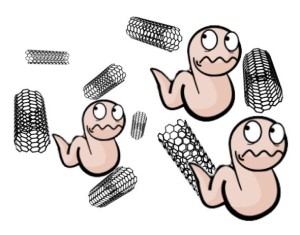Water security, of course, is a key issue and of particular concern in many parts of the world including the Middle East. (In the Pacific Northwest, an area described as a temperate rain forest, there tends to be less awareness but even we are sometimes forced to ration water.) According to a July 5, 2017 posting by Bhok Thompson (on the Green Prophet website) scientists at the Masdar Institute of Science and Technology (in Abu Dhabi, United Arab Emirates [UA]E) have applied for a patent on a new technique for rainmaking,
Umbrella sales in the UAE may soon see a surge in pricing. Researchers at the Masdar Institute have filed for a provisional patent with the United States Patent and Trademark Office for their discovery – and innovative cloud seeding material that moves them closer to their goal of producing rain on demand. It appears to be a more practical approach than building artificial mountains.
Dr. Linda Zou is leading the project. A professor of chemical and environmental engineering, she is one of the first scientists to explore nanotechnology to enhance a cloud seeding material’s ability to produce rain. By filing a patent, the team is paving a way to commercialize their discovery, and aligning with Masdar Institute’s aim to position the UAE as a world leader in science and tech, specifically in the realm of environmental sustainability.
A January 31, 2017 posting by Erica Solomon for the Masdar Institute reveals more about the project,
The Masdar Institute research team that was one of the inaugural recipients of the US$ 5 million grant from the UAE Research Program for Rain Enhancement Science last year has made significant progress in their work as evidenced by the filing a provisional patent with the United States Patent and Trademark Office (USPTO).
By filing a patent on their innovative cloud seeding material, the research team is bringing the material in the pathway for commercialization, thereby supporting Masdar Institute’s goal of bolstering the United Arab Emirates’ local intellectual property, which is a key measure of the country’s innovation drive. It also signifies a milestone towards achieving greater water security in the UAE, as rainfall enhancement via cloud seeding can potentially increase rainfall between 10% to 30%, helping to refresh groundwater reserves, boost agricultural production, and reduce the country’s heavy reliance on freshwater produced by energy-intensive seawater desalination.
Masdar Institute Professor of Chemical and Environmental Engineering, Dr. Linda Zou, is the principal investigator of this research project, and one of the first scientists in the world to explore the use of nanotechnology to enhance a cloud seeding material’s ability to produce rain.
…“Using nanotechnology to accelerate water droplet formation on a typical cloud seeding material has never been researched before. It is a new approach that could revolutionize the development of cloud seeding materials and make them significantly more efficient and effective,” Dr. Zou remarked.
…
Conventional cloud seeding materials are small particles such as pure salt crystals, dry ice and silver iodide. These tiny particles, which are a few microns (one-thousandth of a millimeter) in size, act as the core around which water condenses in the clouds, stimulating water droplet growth. Once the air in the cloud reaches a certain level of saturation, it can no longer hold in that moisture, and rain falls. Cloud seeding essentially mimics what naturally occurs in clouds, but enhances the process by adding particles that can stimulate and accelerate the condensation process.
Dr. Zou and her collaborators, Dr. Mustapha Jouiad, Principal Research Scientist in Mechanical and Materials Engineering Department, postdoctoral researcher Dr. Nabil El Hadri and PhD student Haoran Liang, explored ways to improve the process of condensation on a pure salt crystal by layering it with a thin coating of titanium dioxide.
The extremely thin coating measures around 50 nanometers, which is more than one thousand times thinner than a human hair. Despite the coating’s miniscule size, the titanium dioxide’s effect on the salt’s condensation efficiency is significant. Titanium dioxide is a hydrophilic photocatalyst, which means that when in contact with water vapor in the cloud, it helps to initiate and sustain the water vapor adsorption and condensation on the nanoparticle’s surface. This important property of the cloud seeding material speeds up the formation of large water droplets for rainfall.
Dr. Zou’s team found that the titanium dioxide coating improved the salt’s ability to adsorb and condense water vapor over 100 times compared to a pure salt crystal. Such an increase in condensation efficiency could improve a cloud’s ability to produce more precipitation, making rain enhancement operations more efficient and effective. The research will now move to the next stage of simulated cloud and field testing in the future.
…
Dr. Zou’s research grant covers two more years of research. During this time, her team will continue to study different design concepts and structures for cloud seeding materials inspired by nanotechnology.
To give you a sense of the urgent need for these technologies, here’s the title from my Aug. 24, 2015 posting, The Gaza is running out of water by 2016 if the United Nations predictions are correct. I’ve not come across any updates on the situation in the Gaza Strip but both Israel and Palestine have recently signed a deal concerning water. Dalia Hatuqa’s August 2017 feature on the water deal for Al Jazeera is critical primarily of Israel (as might be expected) but there are one or two subtle criticisms of Palestine too,
…
Critics have also warned that the plan does not address Israeli restrictions on Palestinian access to water and the development of infrastructure needed to address the water crisis in the occupied West Bank.
Palestinians in the West Bank consume only 70 litres of water per capita per day, well below what the World Health Organization recommends as a minimum (100).
In the most vulnerable communities in Area C – those not connected to the water network – that number further drops to 20, according to EWASH, a coalition of Palestinian and international organisations working on water and sanitation in the Palestinian territories.
…
The recent bilateral agreement, which does not increase the Palestinians’ quota of water in the Jordan River, makes an untenable situation permanent and guarantees Israel a lion’s share of its water, thus reinforcing the status quo, Buttu [Diana Buttu, a former adviser to the Palestinian negotiating team] said.
“They have moved away from the idea that water is a shared resource and instead adopted the approach that Israel controls and allocates water to Palestinians,” she added. “Israel has been selling water to Palestinians for a long time, but this is enshrining it even further by saying that this is the way to alleviate the water problem.”
…
Israeli officials say that water problems in the territories could have been addressed had the Palestinians attended the meetings of the joint committee. Palestinians attribute their refusal to conditions set by their counterparts, namely that they must support Israeli settlement water projects for any Palestinian water improvements to be approved.
According to Israeli foreign ministry spokesman Emmanuel Nahshon, “There are many things to be done together to upgrade the water infrastructure in the PA. We are talking about old, leaking pipes, and a more rational use of water.” He also pointed to the illegal tapping into pipes, which he maintained Palestinians did because they did not want to pay for water. “This is something we’ve been wanting to do over the years, and the new water agreement is one of the ways to deal with that. The new agreement … is not only about water quotas; it’s also about more coherent and better use of water, in order to address the needs of the Palestinians.”
But water specialists say that the root cause of the problem is not illegal activity, but the unavailability of water resources to Palestinians and the mismanagement and diversion of the Jordan River.
…
Access to water is gong to be of increasing urgency should temperatures continue to rise as they have. In many parts of the world, potable water is not easy to find and if temperatures continue to rise areas that did have some water security will lose it and the potential for conflict rises hugely. Palestine and Israel may be a harbinger of what’s to come. As for the commodification of water, I have trouble accepting it; I think everyone has a right to water.


![Bacteriorhodopsin is the only protein of purple membranes, which contains few different lipids. [downloaded from the University of Bari: http://www.biologia.uniba.it/fisiologia/corcelli/en/ric2.html]](http://www.frogheart.ca/wp-content/uploads/2013/07/purpleBacteriorhodopsin-300x225.jpg)